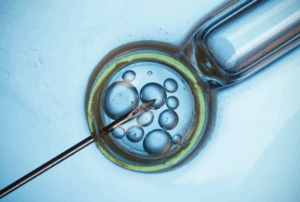AV or Aerobic Vaginitis is a condition that many people do not know anything about – however it is present in 5-13% of asymptomatic AFAB (assigned female at birth), with this being higher in those who do have symptoms!
So keep reading to find out what this is, what this means and what you can do about it!
What is it?
Aerobic Vaginitis (AV) was first recognised as a condition in 2002[1].
- Dysbiosis of the vaginal microbiome[2]
- Higher levels of aerobic bacteria – such as Staphyloccous aureus
- Lower levels of Lactobacilli (‘good’ bacteria)
- Inflammation of the vagina
- Vaginal atrophy (dryness)
Symptoms include:
- Vaginal inflammation
- Burning sensation
- Abnormal discharge – yellow or green in colour
What causes Aerobic vaginitis?
The exact root cause of AV is not entirely understood.
The condition is a form of vaginal microbiome dysbiosis, often featuring a reduction in the relative amount (%) of ‘good’ bacteria, the presence of ‘bad’ bacteria and/or pathogens, and high levels of inflammation. As all of these aspects of vaginal dysbiosis interact, it is difficult to determine whether one or more of these are the precise cause of AV.
How is it different from BV?
As so little is understood about vaginal health – it is all too often that conditions are incorrectly diagnosed, with it assumed that any discomfort is simply BV or thrush. That is why we are here to start to clear that up!
While BV is caused by anaerobic bacteria (so bacteria that do not require oxygen in order to survive. Whereas, AV is caused by aerobic bacteria – so bacteria that DO require oxygen in order to survive.
As different bacteria cause these conditions, it is really important to correctly distinguish between the two, in order to seek the correct treatment and plan of action.
So, some of the main differences are:
- Discharge Colour
- AV = green/ yellow
- BV = white/grey
2. Inflammation
- AV = Yes, this is a key feature of AV
- BV = Not as much or at all
3. Pain during sex
- AV = yes
- BV = no
Of course if you are still confused and unsure, then we would definitely recommend speaking to a healthcare professional who will be able to advise you – this includes your GP, other professionals, or one of our own ScreenMe professionals!
What are the Health Implications of AV?
Apart from these uncomfortable symptoms, AV can also[3]:
- increase your risk of STIs[4].
- Increase risk of other infections
- Develop into PID (pelvic inflammatory disease)
- Develop into DIV
- Cause fertility issues
- Activate HPV infection and lead to higher risk of cervical cancer
How do I treat AV?
There is no broadly accepted way of treating AV[5]. However, your healthcare professional may prescribe you a specific course of antibiotics.
We would recommend holistically managing your symptoms or healing your intimate health with a range of good practises. While it is best to create a bespoke plan for yourself with one of our experts; some examples of good practises include:
- Only washing with water and/or fragranced, chemical-free products
- Eating vaginally-friendly foods such as sauerkraut and kefir
- Wearing cotton underwear and allowing your vagina to ‘breath’ (not always wearing tight clothing)
[1] https://dermnetnz.org/topics/desquamative-vaginitis
[2] https://dermnetnz.org/topics/aerobic-vaginitis
[3] https://dermnetnz.org/topics/aerobic-vaginitis
[4]https://www.ncbi.nlm.nih.gov/pmc/articles/PMC10019880/#:~:text=The%20frequency%20of%20AV%20varies,B%20streptococcus%20and%20Staphylococcus%20aureus.
[5]https://www.ncbi.nlm.nih.gov/pmc/articles/PMC10019880/#:~:text=There%20is%20no%20generally%20accepted,and%20estrogen%20to%20treat%20atrophy.








